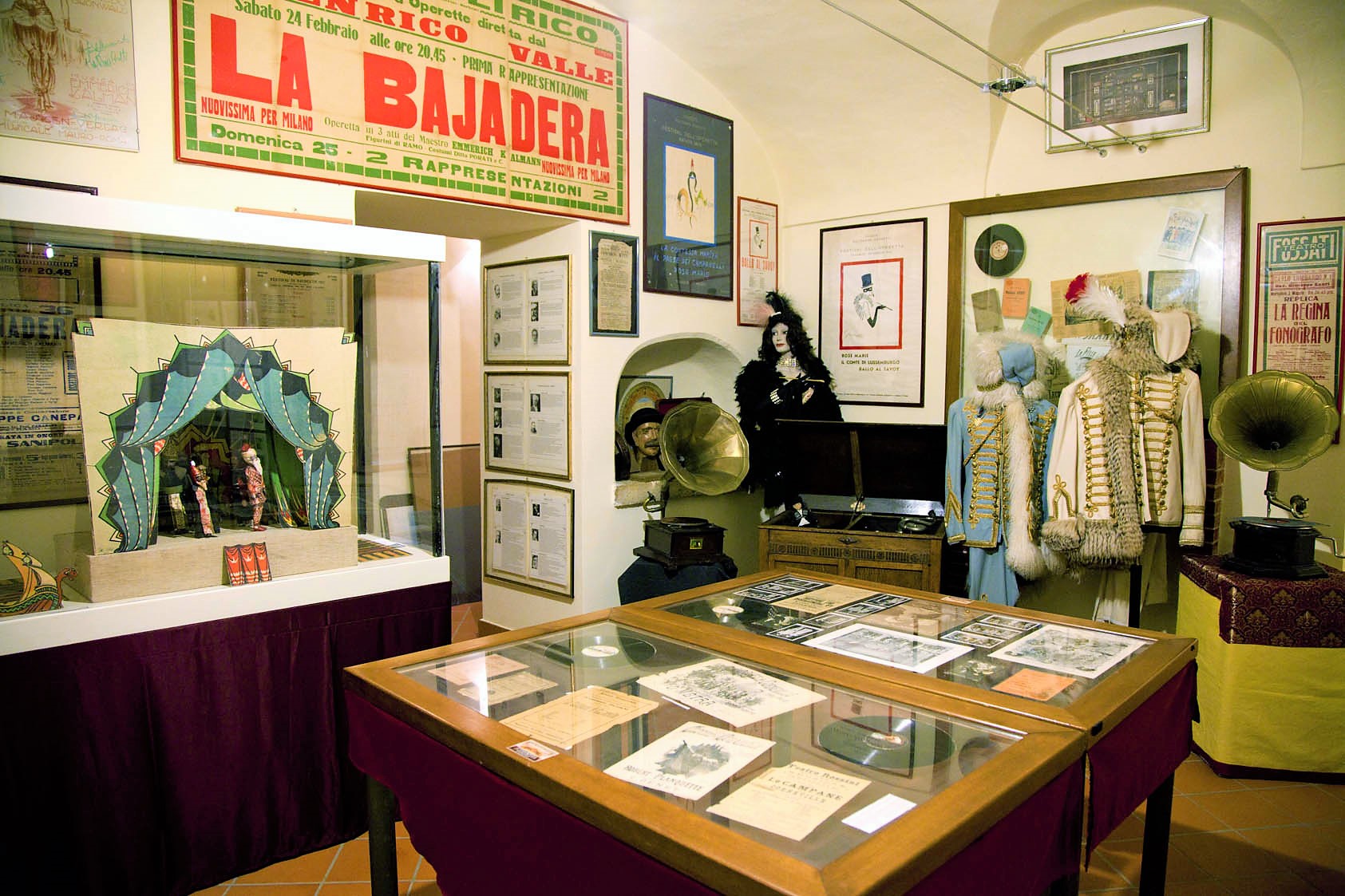The Museum of Operetta in Torre Cajetani is more than just a collection of memorabilia by a great actor that Sandro Massimini was, but is the tale of a century of social life.
The museum tells the story of the rise of the bourgeoisie with its desire to emancipate itself, have fun and create its own style. While the work is mainly related to melodrama, the royal courts and the great theatres, operetta tells the emotional life of people merrily and joyfully.
In the collection of original posters from various parts of Europe, one can perceive this glamorous show in which the woman also begins to play a new role. It is no coincidence that in the name of the most famous operetta, this very spirit is enclosed: The Merry Widow, Die Lustige Witwe, by Franz Lehár.
Operetta was born around the middle of the nineteenth century in France and then went to Vienna and London. It is an evolution of French opera-comique, German singspiel and English ballad-opera, which were theatrical genres born in opposition to the monopoly of Italian opera in the 1800s.
And this alleged rivalry is partly condemning the operetta to a second-tier role. The actors in operetta had to have the same musical and artistic qualities as those of an opera but did not gain the same theatrical reputation.
The maximum splendour of operetta came with the Belle Epoque period, and in the various countries the shows began to have particular and unique styles and forms. Three different styles were featured by three great composers: Jacques Offenbach in France, Johann Strauss II in Austria and Sullivan of Gilbert & Sullivan in London.
In the United States, the King of Operetta was Victor Herbert, who contaminated it with Jazz and rock transforming it into a musical, often in film. It can be said that the American 1930s were characterised by dance films and singers often born from theatrical performances.
In Italy operetta is linked to the names of Mario Costa, Virgilio Ranzato, Giuseppe Pietri, and among the most famous titles we cite Addio Giovinezza e Acqua cheta (Pietri), Il paese dei campanelli e Cin-Ci-Là (Ranzato), Scugnizza e Posillipo (Costa), La duchessa del Bal Tabarin and La Danza delle libellule (Lombardo).
But the rivalry with opera was too great and in the late 1930s the transformation began into revues. But for a few selected connoisseurs, operetta retained its intact charm and its representations are a delight.
The greatest operetta performer was Sandro Massimini, born in Milan in 1942, who remodelled it with new rhythms and new dances. In his career Massimini for over 25 years brought onto the stage the best Italian and international operas.
Sandro Massimini passed away while still young but he has left his collection of souvenirs to the public so that he can continue to make this musical genre live and give an immediate image of the ‘roaring years’.
In the museum of operetta in Torre Cajetani, one room is designed for projections and there are scenes from famous shows where you can immediately appreciate the art and the engaging and communicative power of the operetta.








Follow us